Hello all!
In this post I want to talk to you about bird photography, and why its fun to do!
This is not a post for professional photographers, but just for beginning enthusiast photographers, who want to do more with their new bought DSLR, or mirror-less camera.
I Own a Canon EOS 100D, with a Tamron 18-270mm lens, and the lens is ideal for photographing birds imho.
Bird photography comes down to just a few simple things tbh. And no, you don’t need to be an expert in birds, you just need to know how to operate your camera.
Photographing birds in Aperture Priority
When you want to photograph a bird, who is sitting on a fence or pole for instance, shooting in aperture priority is the best option in my opinion, because you can create a nice blurry background.
The next shot is a simple example from a Western Jackdaw sitting on a fence. I took this photo while I was visiting Schiphol Airport, to photograph some large mechanical birds, when I saw this Jackdaw sitting on one of the fences there.
My long lens came in really handy this time, because he was at quite a big distance away from me, minding his own business.
My settings for this shot were 1/400 sec, ISO 100, F 6.3, at 250 mm focal length.
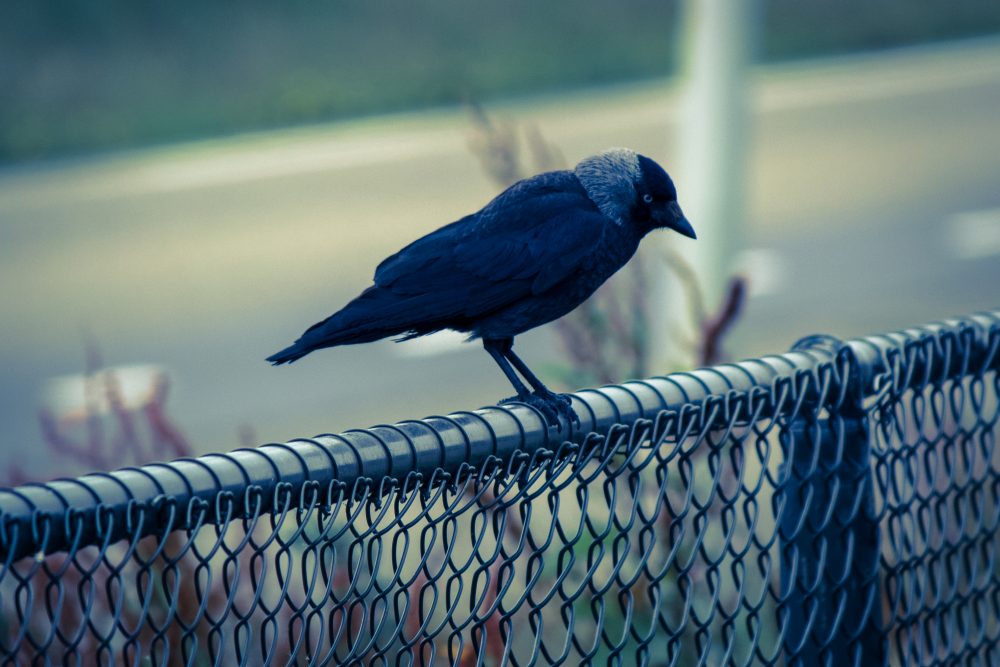
One of the most common birds to photograph, because there are so many of them, is of course the dove, and I was able to get a nice aperture priority shot in from this dove sitting on a hand railing. The background is nice and blurry, so all the focus is on the dove.
My settings for this shot were 1/200 sec, ISO 320, F 5.6, at 154 mm focal length.
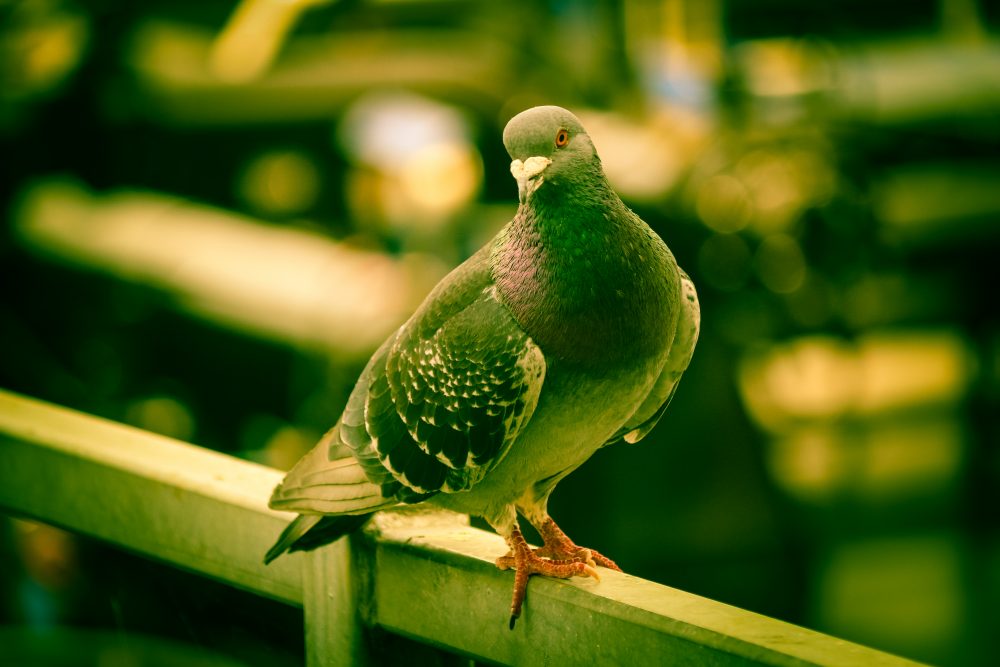
When you live close to the beach, or just a short travel away from the beach, its also nice to photograph seagulls, and there are usually lots of em!
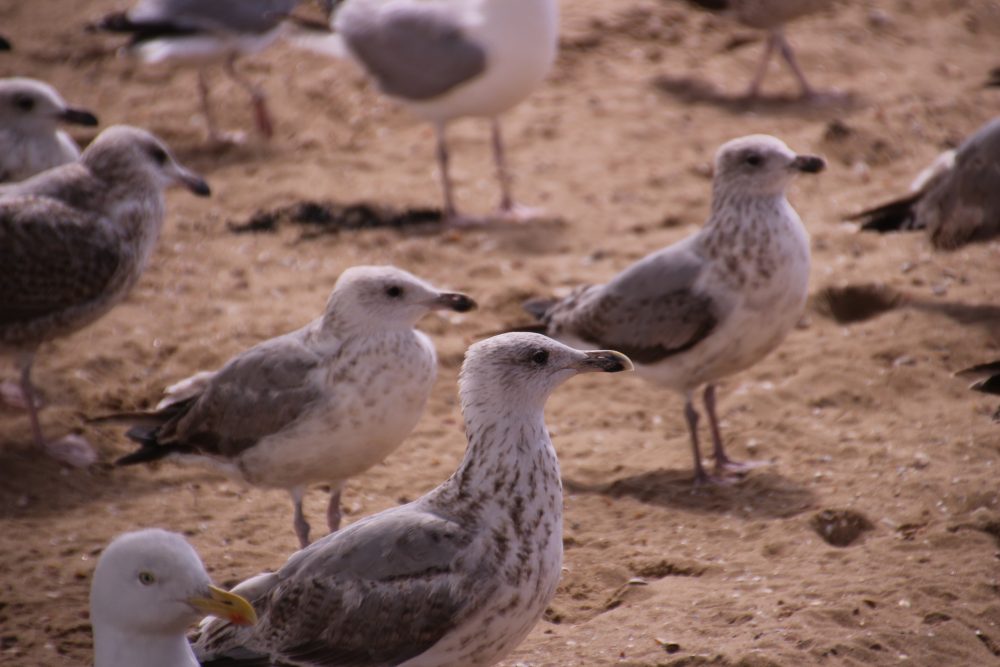
But its a lot nicer to focus on just one seagull, who is nice enough to strike a pose for the camera.
So I was happy to capture the seagull in the below image, which has a nice blurry background again, and it seems as if the bird was really posing for this shot.
My settings for this shot were 1/800 sec, ISO 100, F 6.3 at 270 mm focal length.
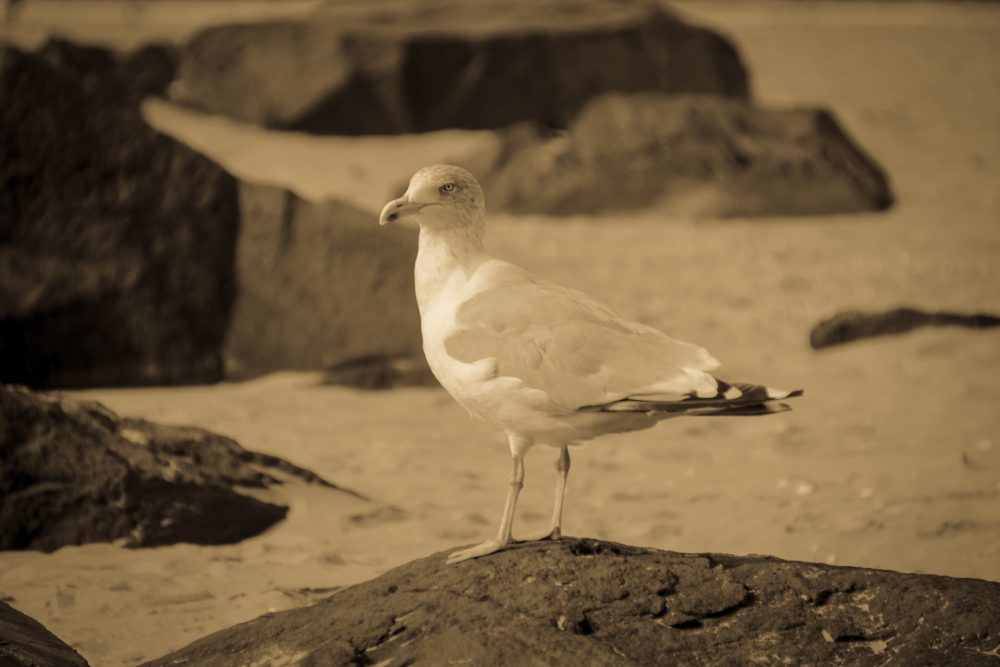
When photographing birds, it comes in handy to be patient, because you might get some awesome shots in from birds in action.
In the below image you can see a heron with a frog in its beak, which he had caught seconds before.
I saw this heron milling about real slowly like he was trying to catch something, so I stopped and waited till he made his move.
It was impossible to see what he was after, because he sticks out from the grass, with his long stilts.
And then he made his move and caught the frog, and made his way to a safe place where he could eat the frog. And that’s when I took the photograph.
My settings for this shot were 1/500 sec, ISO 320, F 6.3 at 270 mm focal length.
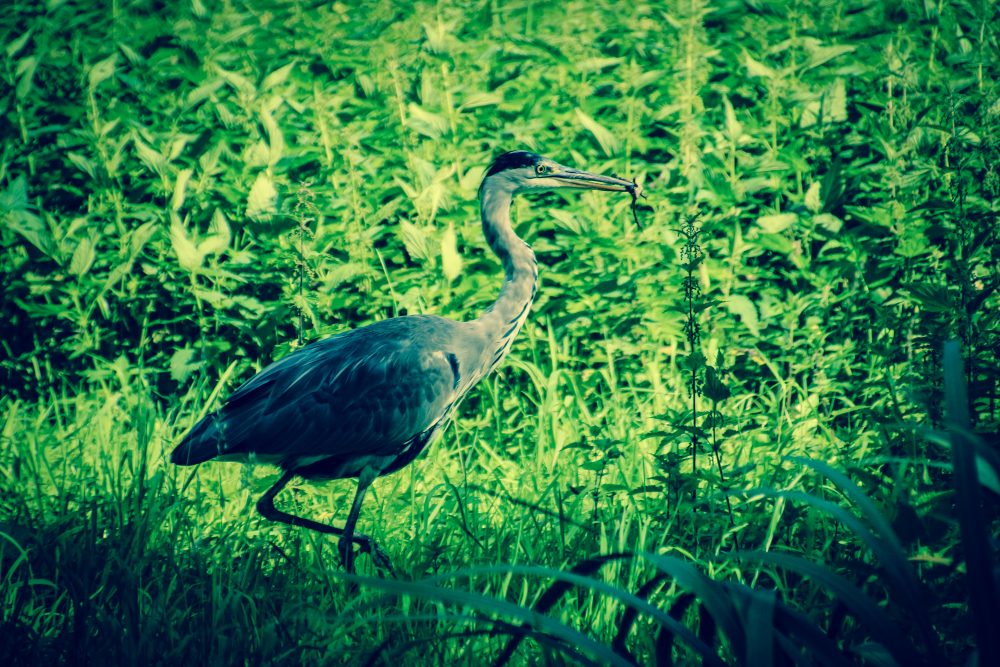
Photographing birds in Shutter speed Priority
When you try to photograph birds in action, shooting in shutter speed priority at around 1/1000 seconds might be the best option, because you can freeze the bird in flight.
You also need to make sure that you pan your camera when the bird is in motion, to get a nice blurry background, while the bird stays in focus.
It can be very hard to catch a bird in flight, because it always happens when you are not prepared, so going to a bird show in a zoo is a nice option.
So of I went to Blijdorp, which is a large zoo in Rotterdam, which I like to visit every now and then 🙂
They have a bird show at set times, so make sure you check at what time the show starts so you can get a good seat to take your photographs.
The below image is from a blue-and-yellow macaw in flight, with its wings all spread out floating on air.
I really had to pan my camera fast, because they fly around at a decent speed. So it might be good to practice panning your camera, and taking a picture, before you go to a zoo, to try your luck.
My settings for this shot were 1/1000 sec, ISO 640, F 7.1 at 169 mm focal length.
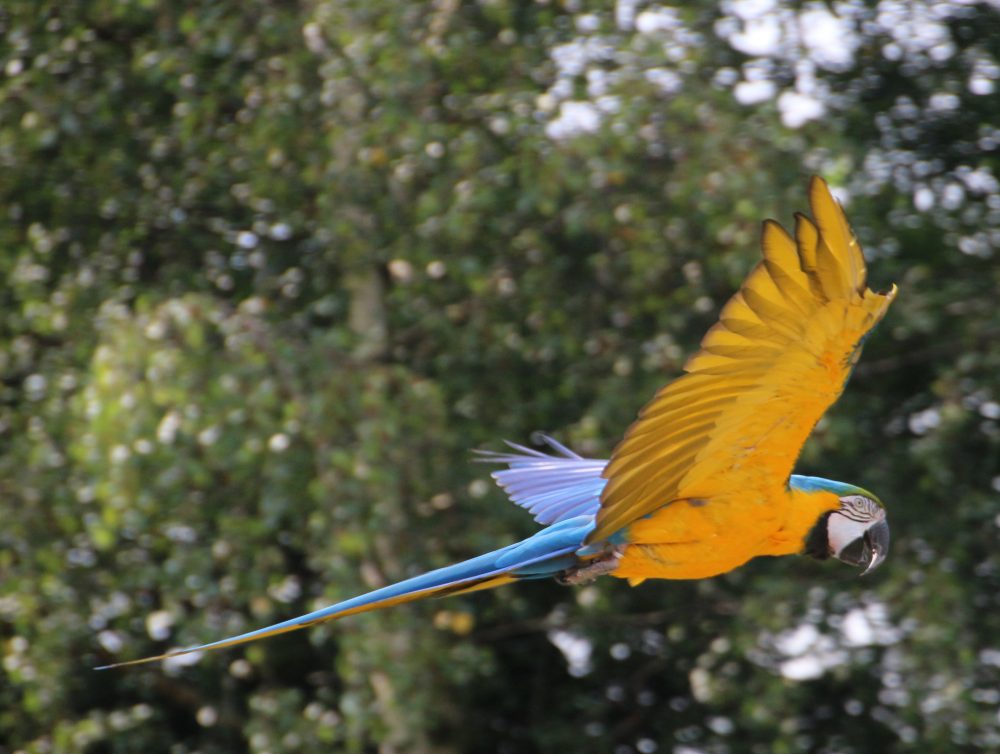
The next image is from a Harris’s hawk coming at me at a small angle, so I didn’t have to pan that much. I just had to get the shutter speed right.
My settings for this shot were 1/1000 sec, ISO 1000, F 6.3 at 142 mm focal length.
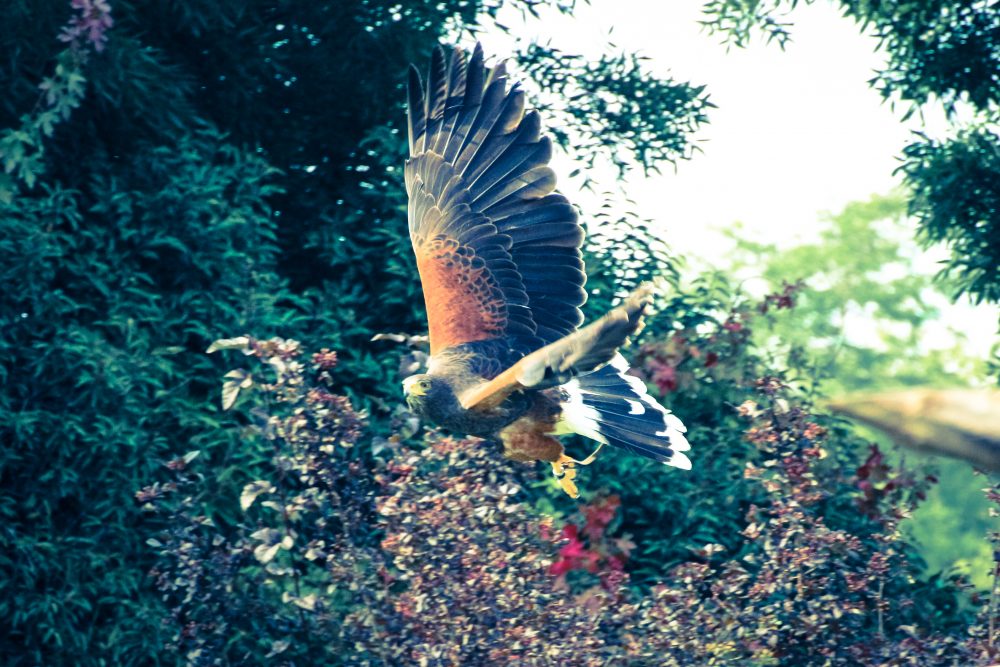
Anyways, that’s it for today’s post.
I hope you enjoyed reading it, and that it helped you out to get some better images from birds in action or birds “posing”.
Feel free to leave a nice reply at the bottom, and share the post with your friends, if you liked it!
Kind regards,
J.
